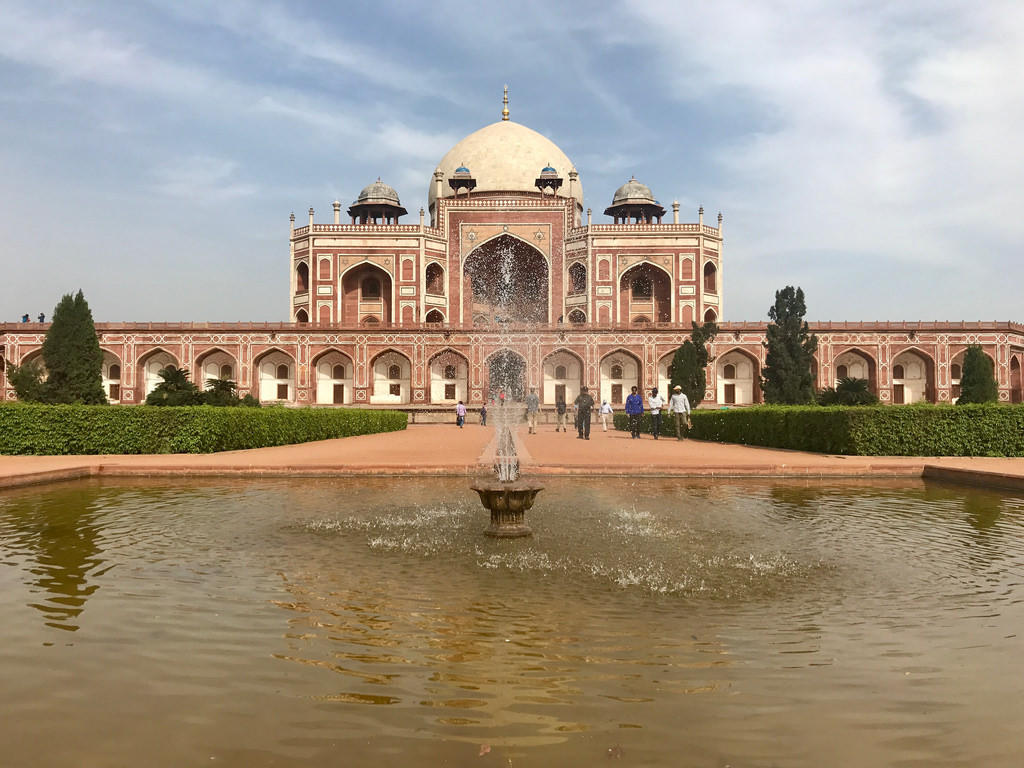There are many languages in India - depending on the definition, the number is thought to exceed a thousand. In fact, India is one of the few countries that does not have a national language, though both English and Hindi are the official language of India used by the government - and the language spoken or at least understood by most of its inhabitants, is Hindi.
So where does Hindi come from and what is its place among the languages of the world? We explore the different forms of language and a brief history of Hindi in this guide.
| Type of Hindi | Description |
|---|---|
| Standard Hindi | The official language of India, derived from Khari Boli. It is based on Sanskritized Hindustani and written in the Devanagari script. Used in formal education and government. |
| Hindustani | A colloquial language blending Hindi and Urdu. Used as a lingua franca in northern India, it incorporates vocabulary from Persian, Arabic, and Sanskrit. |
| Urdu | Similar to Hindi in grammar but with heavy Persian and Arabic influences. It is the official language of Pakistan and written in the Nastaliq script. |
| Regional Hindi Dialects | Includes Bhojpuri, Awadhi, and Braj Bhasha. These dialects are widely spoken in specific regions and are culturally significant. |
| Bollywood Hindi | A mix of standard Hindi, Urdu, and English commonly used in Indian cinema. It reflects urban and contemporary speech trends, appealing to a broad audience. |

Language Families in India
India is a land rich in languages. Hundreds of languages and dialects co-exist, some of them spoken by only a few hundred people. While it’s not unusual for several different languages to be spoken in one country, India is fairly uncommon not only through the number of languages but also their diversity, as not all the languages belong to the same language group.
Indo-European Languages of India
About 78% of Indians speak a language belonging to the Indo-European language family, to which English also belongs. However, they do not belong to the same sub-group. The Indian languages are part of the Indo-Iranian languages, forming a subgroup called Indo-Aryan. Hindi is part of this branch, Indo-Aryan, and along with English, serves as one of the official languages of India. Additionally, Hindi is the official language in the states of Bihar, Delhi, Haryana, Jharkhand, Madhya Pradesh, Rajasthan, Uttarakhand, and Uttar Pradesh.
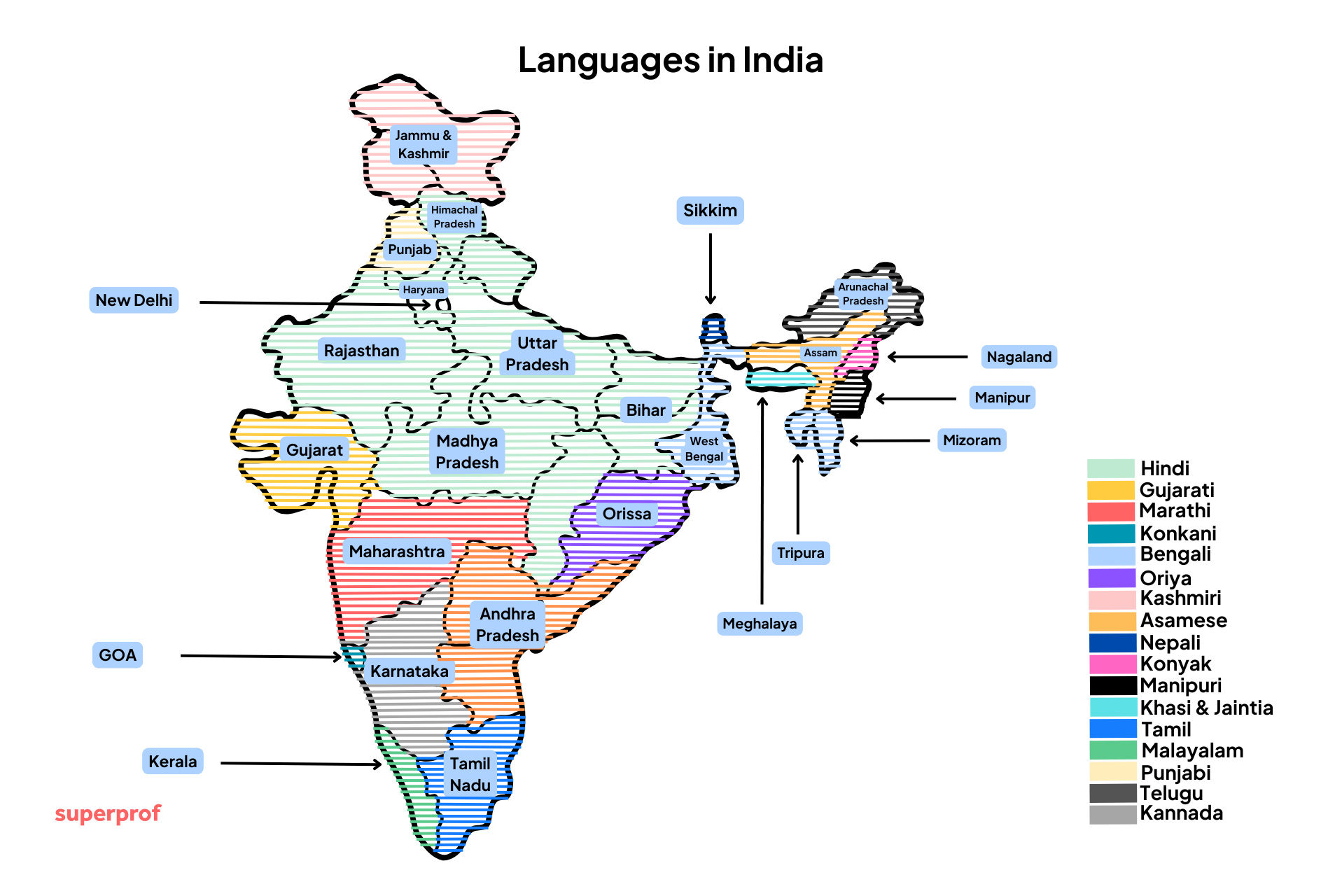
The oldest Indo-Aryan language attested in India is Vedic Sanskrit, with texts dating to the 2nd-1st millennium BC transmitted orally before being set down in writing - for example, some of the sutras of the Rigveda, an important collection of Hindu hymns.
Hindi With Urdu is the most common variety, spoken by nearly 600 million worldwide.
The Indo-Aryan languages of India include:
- Hindi (with Urdu, over 590 million speakers)
- Bengali or Bangla (205 million) mostly spoken in the state of West Bengal and part of Assam
- Punjabi (100 million), spoken in the states of Punja, Haryana and Delhi, as well as much of Pakistan
- Marathi (75 million) spoken in Maharashtra and Goa
- Gujarati (50 Million) spoken in Gujarat and the federal (union) territories of Daman and Diu, Dadra and Nagar Haveli. It was Mahatma Gandhi’s native tongue.
- Bhojpuri (40 million) spoken in Uttar Pradesh, Bihar and Jharkhand
- Maithili (35 million) spoken in Bihar and Jharkhand
- Odia (35 million) spoken in Odisha, West Bengal, Jharkhand, Chhattisgarh and Andhra Pradesh
- Marwari (30 million) spoken in Rajasthan, Gujarat and Haryana
- Sindhi (25 million) spoken in Gujarat and Maharashtra and the Sindh province of Pakistan
- Assamese (24 million) spoken in Assam (of tea fame) and Arunachal Pradesh
- Rajasthani (20 million) spoken in Rajasthan, Madhya Pradesh, Gujarat, Punjab and Haryana
- Rangpuri (15 million) spoken in Assam and West Bengal
- Bishnupriya (12 million) mostly spoken in Assam and Tripura
Dravidian languages
Dravidian languages seem to be native to India (though some scholars disagree); they are not related to any other language family. They are spoken by millions across South Asia, with a significant concentration in southern India. Only two Dravidian languages are spoken outside of India (Brahui in Pakistan and Afghanistan and Dhangar in Nepal and Bhutan).
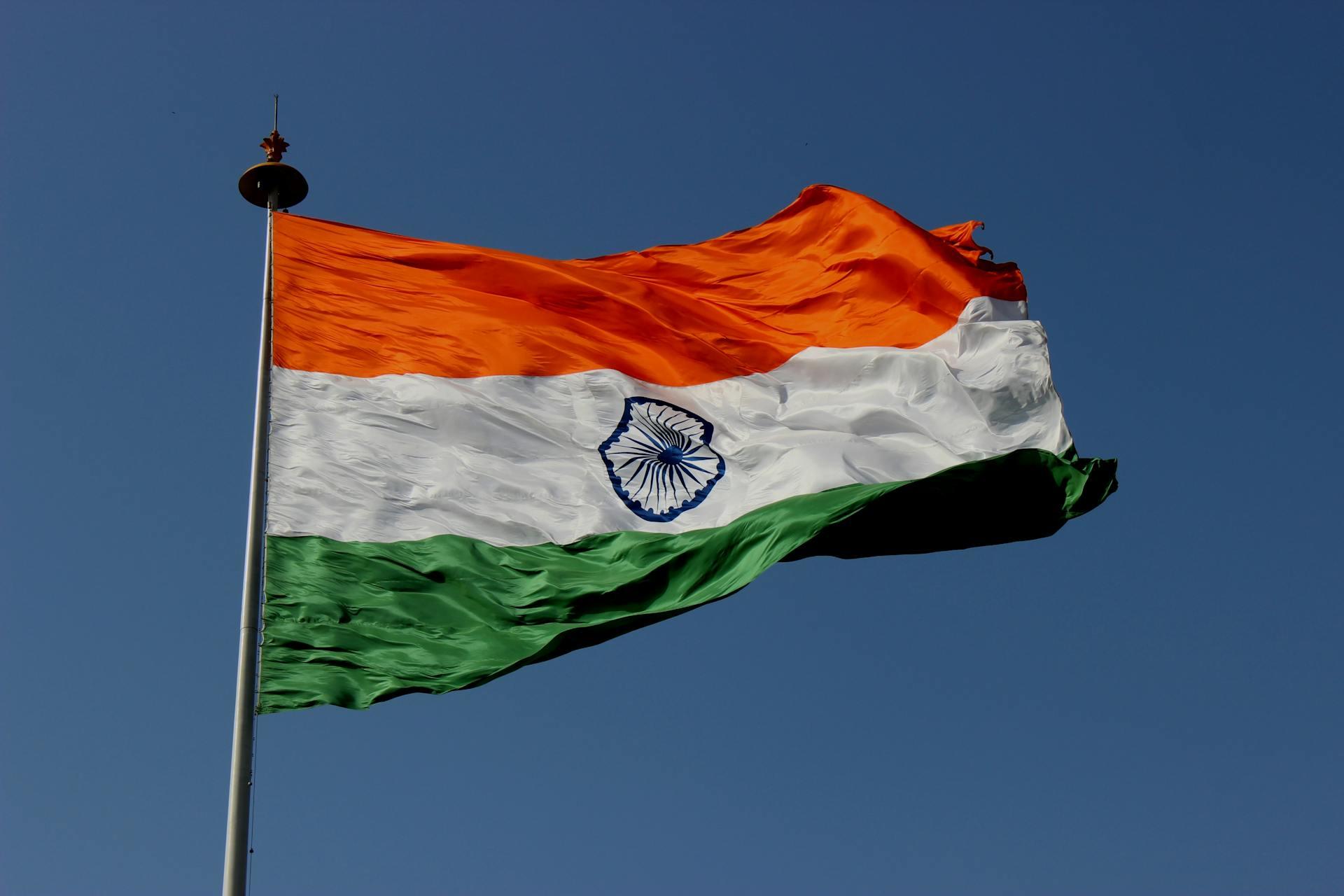
The oldest written evidence of a Dravidian language in India is the Tamil-Brahmi script found on cave walls in Tamil Nadu dating to the 2nd century BC.
These languages are celebrated for their deep cultural roots and contributions to art, literature, and philosophy. Some Dravidian languages in India include:
- Telugu (the most common Dravidian language, numbering about 74 million native speakers)
- Tamil (also spoken in Sri Lanka; over 66 million worldwide)
- Kannada (over 37 million worldwide)
- Malayalam (over 33 million worldwide)
- Tulu (about 1.9 million)
- Beary (about 1.5 million)
- Gondi (over 2 million)
- Brahui (over 2 million)
- Kurukh (over 2 million)
- Muria (about 1 million)
- Kui (about 900,000)
- Koya (360,000)
- Madiya (360,000)
- Kuvi (155,000)
- Malto (over 200,000)
- Kurambhag Paharia (about 12,500)
- Kolami (about 120,000)
- Duruwa (about 51,000)
- Ollari (about 15,000)
- Naiki (about 10,000)
- Manda (spoken in Odisha, about 4,000)
- Kota (spoken in Tamil Nadu, about 930)
- Kalanadi (spoken in Kerala, about 750)
- Holiya (Madhya Pradesh, Maharashtra, Karnataka, about 500 speakers)
- Aranadan (Kerala, about 200)
Other Language Groups in India
Of course, over the long history of India and the many different areas within, there are a number of languages that have been used. India also hosts languages belonging to the Austroasiatic (Munda), Sino-Tibetan, Tai-Kadai and a few other linguistic groups and isolates. We see influences in Persian and the Middle East as well as Europe as people traveled and even colonized areas.
Origin of the Hindi language: Sanskrit and Prakrit
The Hindi language evolved from Sanskrit, an ancient Indo-European language. Forms of Sanskrit spread far and wide, and there are examples of the language being used in Mongolia and many other Asian countries. The North of India is thought to have adopted Sanskrit first and it has been on an interesting journey.
1500 BCE
Vedic Sanskrit
Some of the oldest pieces of Hindi literature are dated to this era.
800 BCE
Classical Sanskrit
A language spoken by the upper classes in Hindi-speaking countries
500 BCE
Prakrit
Prakrit and Pabhramsha dialects become more popular
1526 CE
The Moghul Empire
More Persian loanwords are introduced and a clear Persian influence evolve the language further.
Sanskrit
Based on linguistic grounds, Vedic Sanskrit could date as far back as 1500 BC. Some of the oldest pieces of Hindi literature, such as some of the hymns of the Hindu compilation called the Rigveda, were written in Vedic Sanskrit.
Around 800 BC it morphed into Classical Sanskrit, a language mostly spoken by the upper class, which remained the classical literary language in India for a long time. Though few still speak it, it is still taught in schools the same way that Latin is taught as the classical literary language of Europe.
Prakrit
Prakrit languages evolved from Vedic and Classical Sanskrit. The earliest are attested around 500 BC; the latest around 800 AD. Linguists differ as to whether all Middle Indo-Aryan languages should be grouped under the term Prakrit; as it is, most of the Indo-European languages of India evolved from one or more of them.
Some were Dramatic Prakrits, that is to say, languages used almost exclusively for literature and plays. None of these was used in everyday speech and very often Sanskrit translations were provided so the reader could understand the dialogue. However, as Sanskrit lost ground in certain areas, some dramatic Prakrits devolved into vernacular languages, such as Maharashtra Prakrit, the ancestor of the Marathi language.
The most important Prakrit language was Ardhmagadhi Prakrit, and its grammar is usually used as the standard to teach other Prakrits. In regions where Hindi would later be spoken, however, Sanskrit remained very popular, so that the etymology of many Hindi words comes directly from Sanskrit rather than through a Prakrit language.
The Way to Hindustani
In northern India around 500 AD, the Apabhramsha dialects evolved from Prakrit. They served as a kind of lingua franca in use until the 13th century AD and were referred to as Hindavi by the Persian rulers of the Delhi Sultanate who ruled large swathes of India from 1206 to 1526. The Hindi languages started branching off from Apabramsha around the 11th century AD, most of them being entirely distinct by the 12th, though in many places the Apabhramsha languages were still spoken in parallel.
It was under the Delhi Sultanate that the Persian language first started mixing with the local Apabhramsha dialects to form what would later become the Hindi and Urdu language.
In 1526, the Moghul Empire, a persianised empire of Turko-Mongol descent, supplanted the Delhi Sultanate and ruled over much of India, allowing even more Persian loanwords to enter the language.
By the time the Moghul Empire slowly dissolved in the 18th century, Khari Boli or Khariboli vernacular, successor dialects to the Apabhramsha languages, had replaced Persian as the common language.
The variant of Khariboli used by the upper class in northern India became known as Hindustani.

The Hindi Language
Throughout the Moghul Empire and for many following and rival dynasties, Persian was the court language. However, when the British colonised India in the 18th through the 19th century, they were on the lookout for a widely-spoken language they could use for administration. Hindustani was widespread enough that it became the official language of the British Indian Empire, under the name of Urdu.
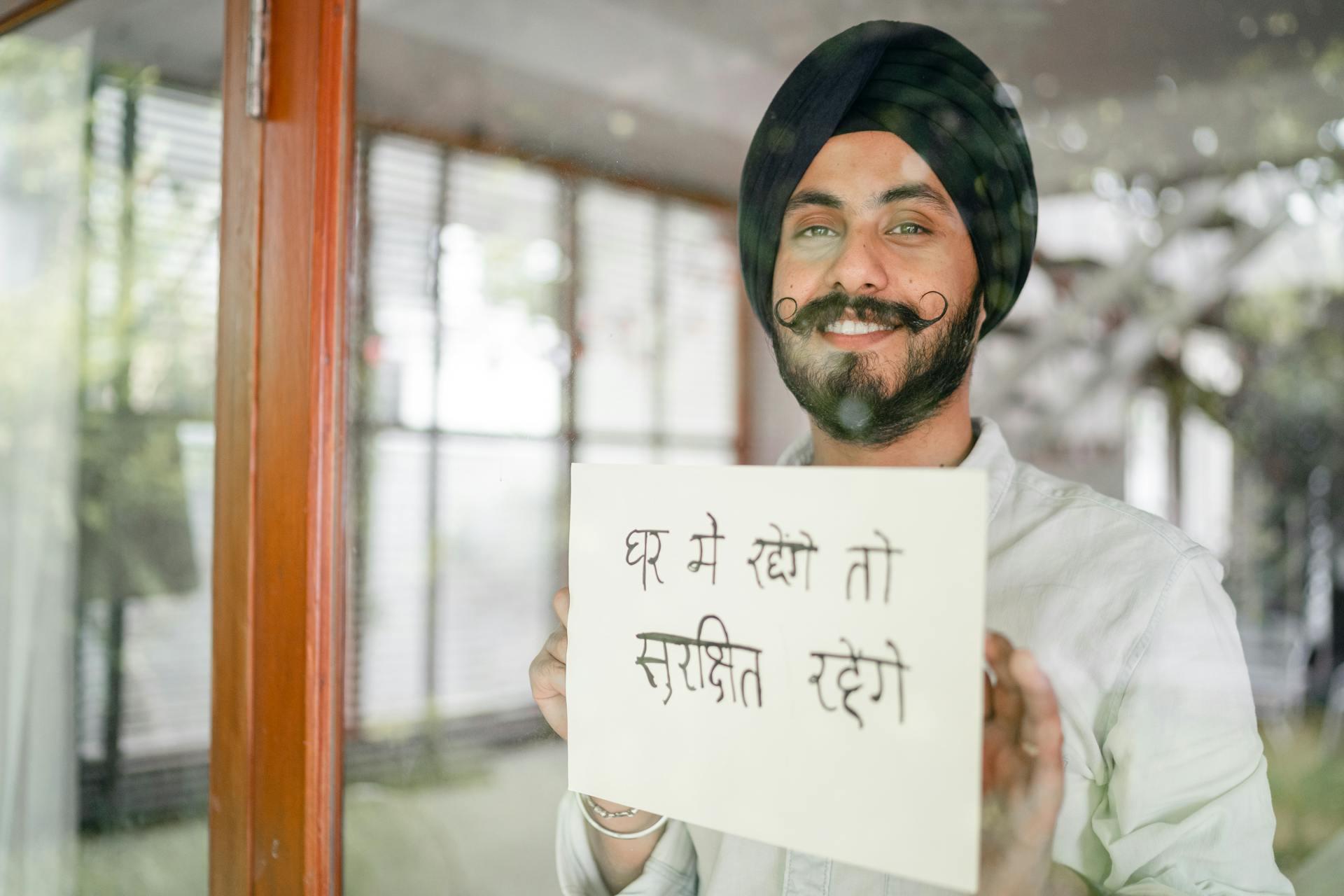
Hindustani is still used as a vernacular and lingua franca is the northern and western regions of the Indian subcontinent. Today, we speak of Hindi if it is spoken in India and Urdu as the language of Pakistan - though, as we will see, there are some differences between the two.
Influences on the Hindi Language
Throughout its history, Hindi absorbed loan words from many different languages. The main outside influence on the Khariboli that later became Hindustani was Persian, through the administrators and soldiers of the Delhi Sultanate and later the Moghul Empire. Most Arabic words in Hindustani come from Persian, which has a lot of Arabic loan words.
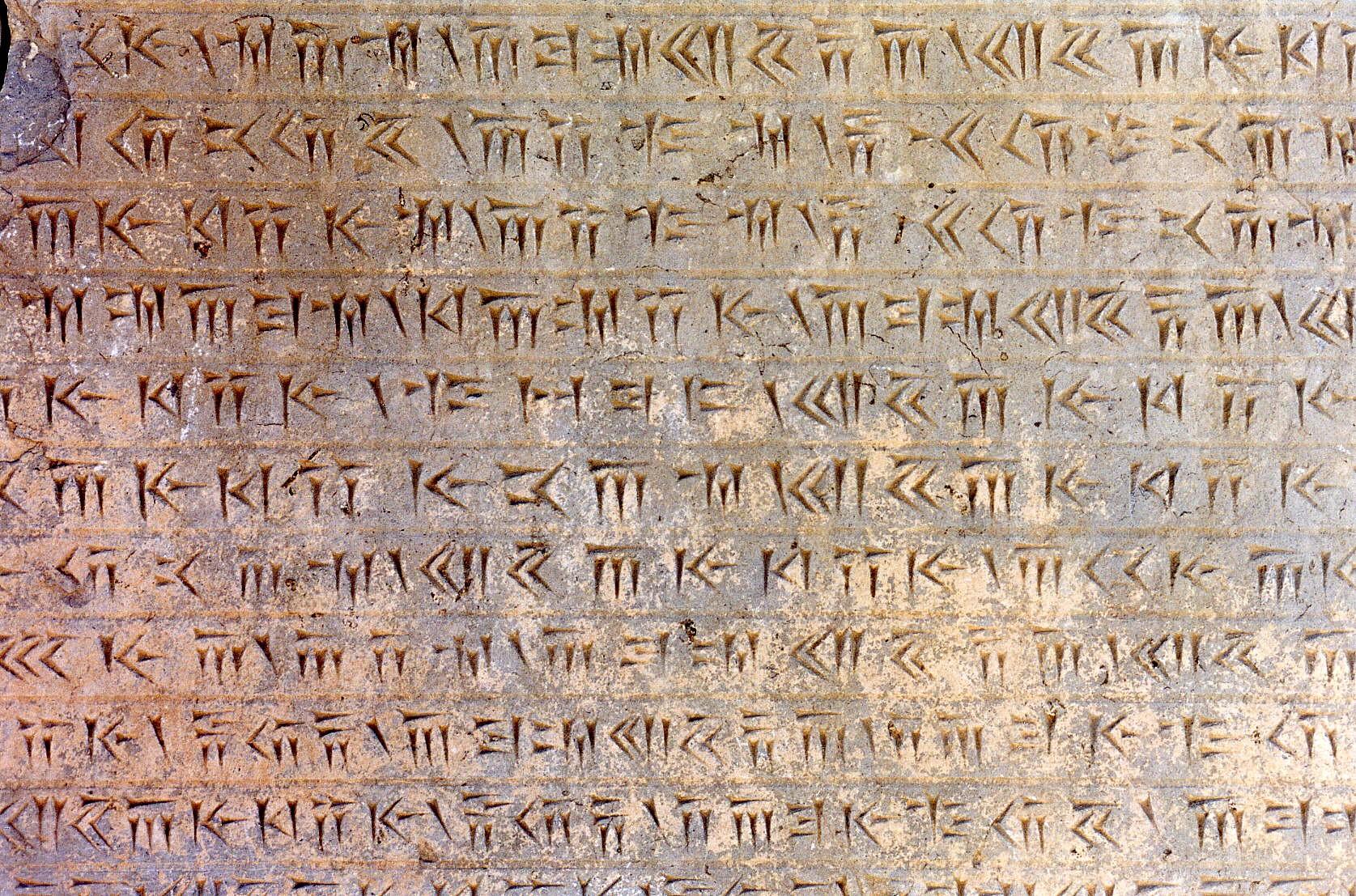
Additionally, since Portugal had territories in India until the 1960s, Hindi has a fair amount of Portuguese loan words such as mez for "table" (from Portuguese mesa) or kamiz, "shirt", from camisa. Of course, through English colonization and modern globalization, Hindi also has a good number of English loan words such as botal from “bottle” or prafessar from “professor”.
Obviously, other Indian languages have also provided Hindi with new words, just as Hindi words have seeped into other languages such as Tamil or Marathi.
Hindi and Urdu: A Language Split or a Reunification?
Urdu is first attested in the late Moghul Empire as a version of Khariboli with heavy Persian influences called Zaban-e Urdu-e Mualla, the “language of the court (or camp)”. It existed in parallel to Hindi and eventually became the official language of Pakistan when the country was founded.
Both Urdu and Hindi are considered registers of Hindustani - two versions of the same language, much like British English and American English are both registers of English. They remain mutually understandable.
They mostly have the same grammar, but differ greatly in vocabulary, with Hindi borrowing much more heavily from Classical Sanskrit while Urdu borrowed more from Persian. The differences are more evident in the literary register than in everyday speech. There are some differences in pronunciation as well.
Script: Devanagari
Main Influences: Sanskrit
Script: Persian (Nastaliq)
Main Influences: Persian, Arabic, & Turkish
The further evolution of Hindi and Urdu is rather exciting. In some ways, they are drifting farther apart as India and Pakistan have their own unique cultures, both in terms of religion (India is primarily Hindu and Pakistan primarily Muslim) and other aspects. On the other hand, Bollywood movies, with their own brand of Hindi (with many Urdu phrases), are immensely popular in both countries and influence the speech of the younger generation, while young Hindi speakers are more comfortable using Persian or Arabic loan words than before. This is an evolution that could go either way:
- Hindi and Urdu can continue to drift apart and become separate languages in truth.
- Hindi and Urdu can continue to influence each other so that their differences slowly erode.
Either way, the future of Hindi and Urdu will be an interesting one!
Learning Hindi with Superprof
Hindi is a useful language that is spoken by millions around the world. As you can see, learning to speak Hindi will mean getting to know a language with a long and literary past and an exciting, dynamic future as well as uses when traveling and in many careers.
Superprof can connect you to Hindi teachers who have a huge level of knowledge and provide lessons at a time and place to suit you. Simply check the profiles of teachers on Superprof today and choose one you would prefer to work with.

